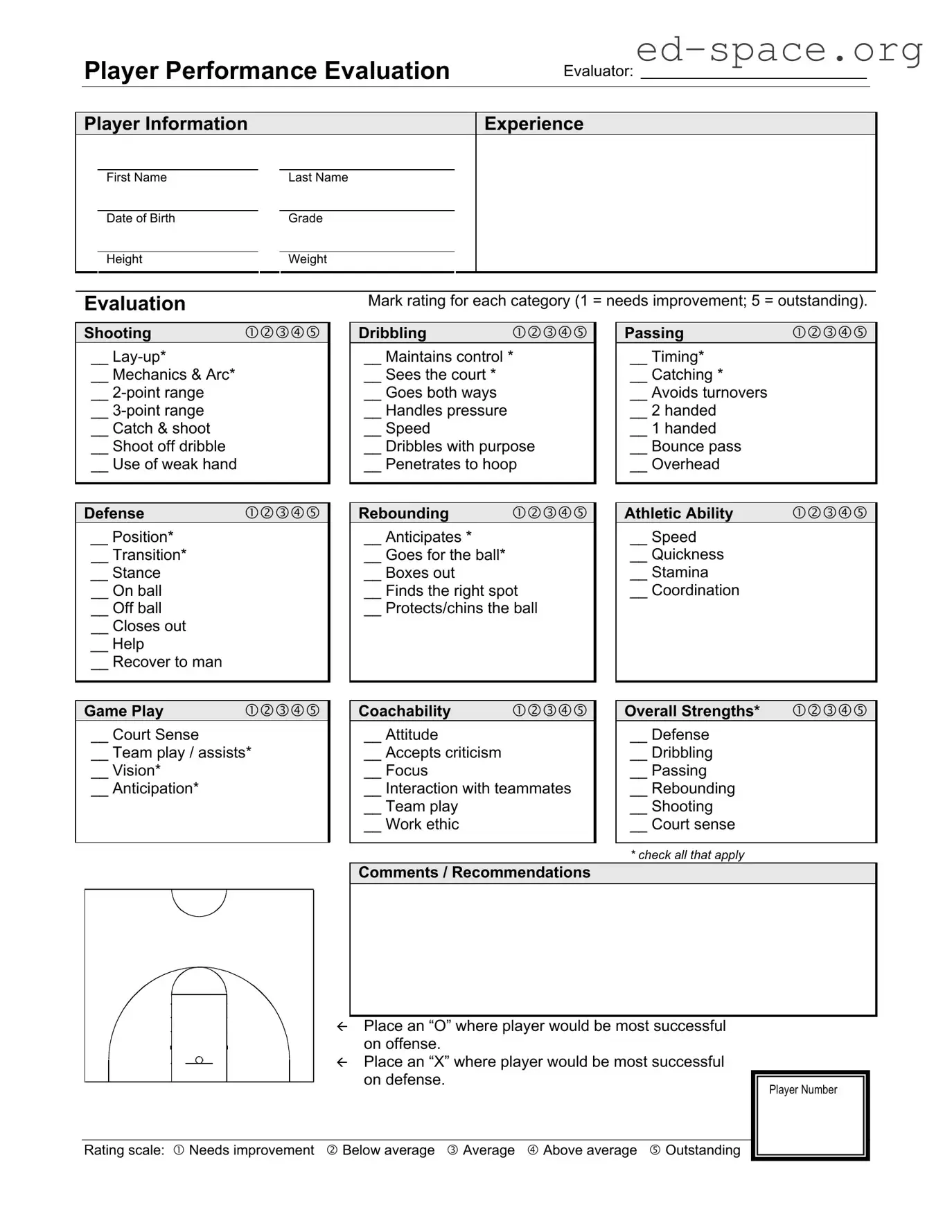What is the purpose of the Basketball Evaluation Form?
The Basketball Evaluation Form is designed to systematically assess the skills, abilities, and performance of basketball players. It helps coaches and evaluators measure a player's strengths and areas for improvement across various categories such as shooting, defense, dribbling, rebounding, passing, athletic ability, game play, and coachability.
Who completes the Basketball Evaluation Form?
The form is typically completed by a coach, scout, or evaluator who observes the player during practices, games, or specific evaluation sessions. These individuals use their knowledge and expertise to provide a fair analysis of the player’s performance.
How is the performance rating determined on this form?
Performance is rated on a scale from 1 to 5 for each category, with 1 indicating "needs improvement" and 5 signifying "outstanding." Evaluators mark the player’s performance based on observation and judgement in each specific skill set or ability area listed on the form.
What does the asterisk (*) next to certain categories mean?
An asterisk (*) next to certain categories such as Lay-up, Mechanics & Arc, Position, Maintains control, and others indicates that these are key areas of focus. Evaluators are asked to pay special attention to these areas and ensure they are assessed meticulously.
How can coaches use this form to improve player performance?
Coaches can use the insights gained from this evaluation to tailor training programs to the specific needs of each player. By identifying areas of weakness, coaches can focus on targeted exercises and drills to enhance those skills. Conversely, recognizing a player's strengths allows coaches to leverage those abilities more effectively within the team strategy.
Are there recommendations included in the form?
Yes, there is a section for comments and recommendations where evaluators can provide specific advice for player improvement, suggest positions where the player might excel, and offer other tailored feedback based on the player’s performance evaluation.
What do the “O” and “X” marks indicate?
The “O” mark is used to indicate where a player would be most successful on offense, while the “X” mark suggests the most suitable defensive position for the player based on their skills and abilities assessed through the form.
Can players access their evaluation results?
Access to evaluation results depends on the policies of the coaching staff or organization. However, sharing evaluation results with players can be beneficial for personal development, allowing them to understand their performance strengths and areas for improvement.
How often should the Basketball Evaluation Form be used?
The frequency of use can vary based on the team’s schedule, level of play, and coaching strategy. It could range from a one-time assessment at the beginning of the season to multiple evaluations throughout the season to track player development and adjust training programs accordingly.

